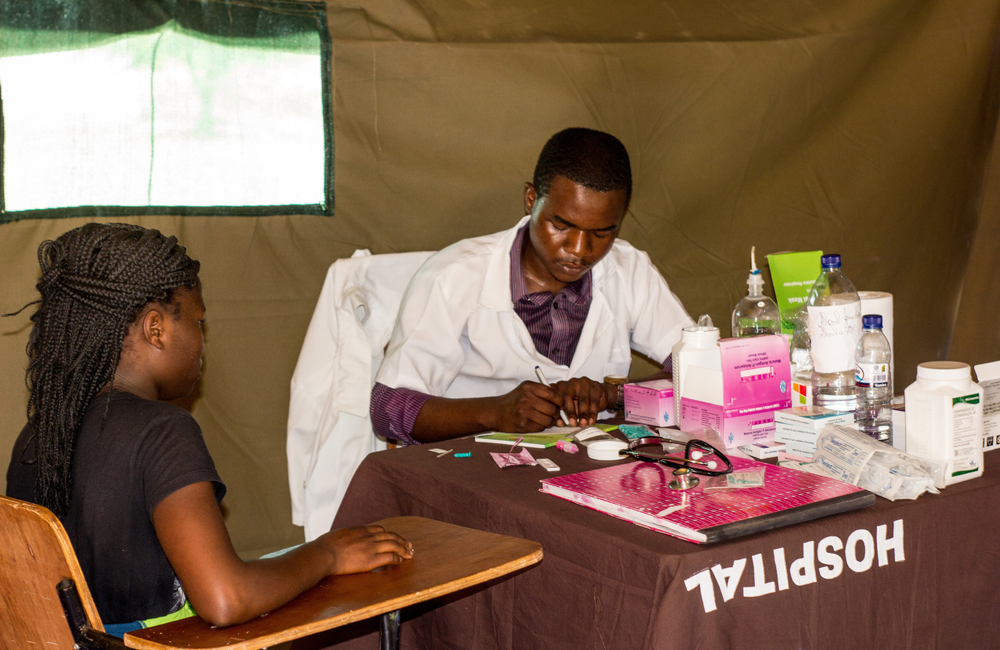
Shifting to differentiated service delivery such as fewer clinic visits, one-stop clinics and community dispensing of antiretrovirals improves retention in HIV care, a study of Mozambique’s national antiretroviral treatment programme has found.
The findings are published in Lancet HIV by Dr Dorlim Moiana Uetela and colleagues from Mozambique’s National Institute of Health.
Differentiated service delivery models for HIV care are designed to reduce the number of clinic visits for people with HIV and free up staff time to provide care to people with advanced HIV or more complicated needs. The shift to differentiated care seeks to address two major challenges faced by antiretroviral treatment programmes: retention in care and capacity to treat.
Retention in care has proved challenging in many settings. People with HIV may become lost to follow-up due to the burden of frequent clinic visits, lack of support, stigma or lack of understanding of the importance of adherence. Research in South Africa shows that in 2018, only 45% of people remained continuously engaged in care in the year after starting treatment.
Treatment capacity is a challenge for all health systems. As people with HIV live longer and ‘test and treat’ approaches increase the number of people needing treatment, clinics must find ways of providing optimal care for a growing number of patients without compromising the standard of care for the sickest patients and those with complex needs.
Differentiated care aims to bring care closer to patients and to make it more convenient by providing more services at one clinic visit and by reducing the frequency of tests and clinic visits for people who have suppressed viral load and no clinical illness.
Mozambique has a high prevalence of HIV (13%) with an estimated 2.4 million people living with HIV in 2022. Mozambique was an early adopter of differentiated service delivery models, implementing eight models already piloted at local level in 2018. The most widely implemented have been three-monthly ART dispensing and community ART groups – in the latter model, a small group of peers take turns to visit the health facility for observation and blood tests, and to collect medication for the rest of the group. Fewer people are thought to have benefited from adherence clubs, fast-track ART initiation, family care and one-stop shops for maternal and child health services, adolescents, and tuberculosis care.
The national evaluation compared one-year retention in care in people who started antiretroviral treatment in the year prior to November 2018 and those who started treatment between December 2019 and June 2020.
In the pre-intervention period, people with HIV attended clinics monthly for clinic appointments and medication dispensing. After the implementation period began, people switched to the differentiated model suitable for them unless they were unwilling or needed more intensive clinical management.
The frequency of clinic attendance varied according to the model of differentiated care suitable for the individual. For example, people enrolled in adherence clubs attended a clinic twice a year for observation and blood tests. If they were clinically stable, with undetectable viral load, they would collect medication every three months. Women attended the maternal and child health clinics monthly, as did tuberculosis patients.
The primary outcome of the study was retention in care 12 months after starting antiretroviral treatment. People were defined as retained in care if, after 12 months, they were still alive and on treatment and not lost to follow-up. People were defined as missing from care if they did not attend the clinic in a 60-day window around an appointment.
The analysis covered everyone who started treatment at the 613 health facilities providing antiretroviral treatment in Mozambique during the study period. Overall, 1,131,118 people were included in the analysis. Seven percent were children, 20% were adolescents and 64% of the overall sample were female.
As differerentiated service delivery was being implemented nationally, it wasn’t possible to do a comparative study which matched communities, and such a design would in any case have been affected by any confounding factors. Instead, the researchers calculated the impact of differentiated service delivery on retention by modelling the trend in retention as people completed 12 months of follow-up in the intervention period against the counterfactual trend (what would have happened, based on past trends, if the intervention had not happened).
At baseline, before the introduction of differentiated service delivery, the retention rate was 67.4%. Four years later, it was 68.6%.
While this looks like almost no change, the researchers’ counterfactual scenario estimated that 44% of people starting treatment would have been retained in care after 12 months by the end of the study period (2021). This alarming decline in retention was not a consequence of COVID-19; the counterfactual trend in the model was based on an observed 0.4% decline per month in retention during the pre-implementation phase in 2018.
Therefore they calculate that differentiated service delivery was associated with 24.5% higher absolute retention compared to the counterfactual scenario. The improvement in retention was greater in men (29%) and in adolescents and young people (28%) than in women (21%) and children (6%).
In an accompanying editorial, Dr Mhairi Maskew of the University of the Witwatersrand and Professor Sydney Rosen of Boston University ask how much of the improvement relative to the counterfactual is attributable to differentiated service delivery. They point out that at the same time Mozambique switched from efavirenz-based to dolutegravir-based treatment, which may have improved the tolerability of treatment, and was also promoting the undetectable equals transmittable message, which is likely to have motivated retention and adherence. They also note that the study does not report what proportion of people on treatment were enrolled in each model of differentiated care.
Moiana Uetela DA et al. Impact of differentiated service delivery models on 12-month retention in HIV treatment: an interrupted time-series analysis. The Lancet HIV, 10: e674-83, 2023.
Maskew M, Rosen S. Estimating the impact of differentiated models for HIV care. The Lancet HIV, 10: e628-9, 2023.
